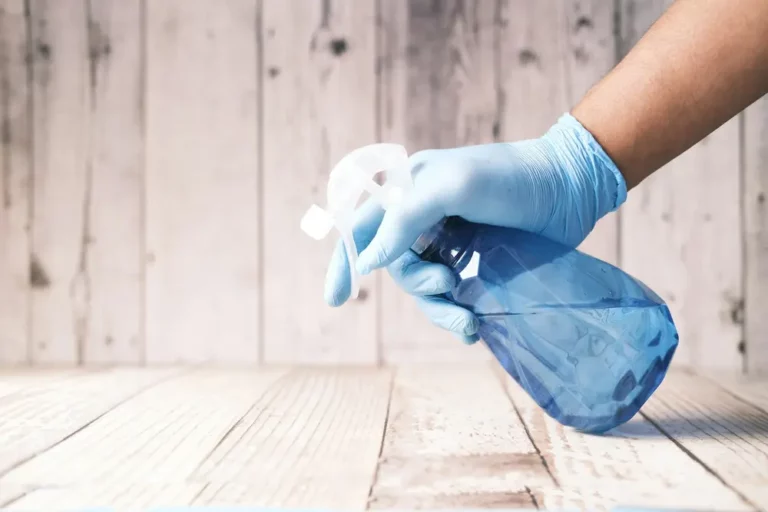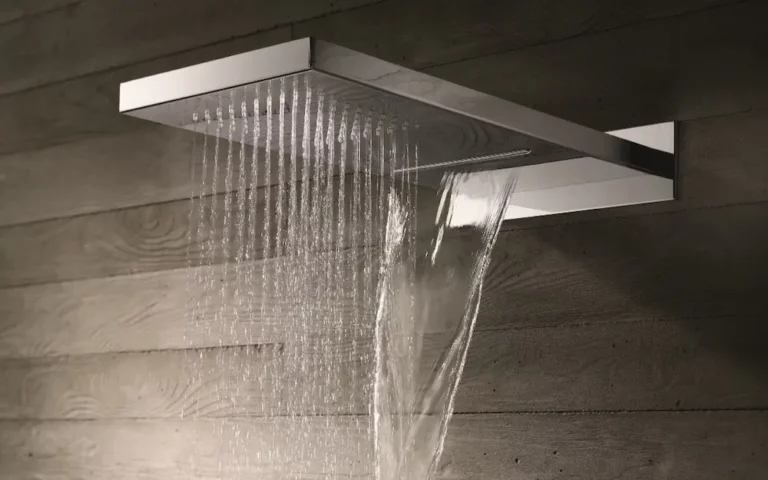Can You Paint a Plastic Bathtub? Expert Tips and Techniques
Transforming the look of your bathroom can be as simple as updating the color of your bathtub. You may be wondering if it’s even possible to paint a plastic bathtub. The answer is yes, you can! With the right preparation and materials, painting a plastic bathtub can be a cost-effective way to modernize your bathroom space.
Before diving into the project, it is essential to understand the type of plastic your bathtub is made of, such as acrylic or fiberglass. Knowing this will help you select the appropriate products and techniques to ensure a successful and long-lasting paint job. To kick off the project, you’ll need to prepare the bathtub by cleaning and sanding it to create an optimal surface for adhesion.
Key Takeaways
- Painting a plastic bathtub is possible and can transform your bathroom
- Proper preparation and understanding your tub’s material are crucial for success
- Select the right products and follow proper techniques for a long-lasting finish
Understanding Plastic Bathtubs
Plastic bathtubs, also commonly known as fiberglass bathtubs, are a popular choice for homeowners due to their affordability, lightweight, and ease of installation. There are two main types of plastic materials used in bathtubs: fiberglass and acrylic.
Fiberglass bathtubs are made of layers of fiberglass, which is a type of plastic reinforced with glass fibers. They are typically coated with a gel finish to protect the surface and provide a smooth, glossy appearance. Fiberglass tubs are lightweight, making them easy to handle and install.
Acrylic bathtubs are made of solid acrylic plastic, which is a more durable and premium material compared to fiberglass. Acrylic tubs are resistant to scratches, stains, and fading. They also retain heat better than fiberglass, offering a more comfortable bathing experience.
When it comes to painting a plastic bathtub, there are a few considerations to take into account. First and foremost is the type of plastic material being used. While both fiberglass and acrylic tubs can be painted, each will require different preparation techniques and specific types of paint.
It is essential to properly clean and prepare the surface of your plastic tub before painting. This may include sanding to create a rougher surface for better paint adherence, using a primer specifically designed for plastic surfaces, and masking off any areas you don’t want to be painted.
In conclusion, painting a plastic bathtub can be a viable option for giving your bathroom a new look. Before you start, understand the type of plastic tub you have and carefully follow the necessary preparation steps to ensure the best results.
Preparing the Bathtub
Before you begin painting your plastic bathtub, proper preparation is essential. First, you’ll need to give your bathroom a thorough cleaning. Remove any soap scum, moisture, and grease from the bathtub surface. A deep clean using a mixture of bleach and warm water will help in breaking down stubborn grime.
Once the bathtub is clean, examine it for any chips or damage to the surface. Smooth out these imperfections by lightly sanding the surface using a fine grit sanding sponge or sandpaper. The goal here is to create a slightly rough surface for the paint to adhere to without damaging the bathtub itself.
After sanding, use a clean cloth or sponge to wipe away any dust or residue from the surface. This step is crucial, as any leftover debris can affect the paint’s adhesion and quality. Make sure the bathtub is completely dry before proceeding to the next step in the painting process.
Materials Needed for Painting
Before you start painting your plastic bathtub, it is essential to gather all the necessary materials. Proper preparation will ensure a smooth experience and a professional result. Here is a list of the essential materials needed:
- Paint: Choose a paint specifically designed for plastic surfaces, such as epoxy-based paint or acrylic latex paint. These paints adhere well to plastic and provide a durable finish.
- Sandpaper: Fine-grit sandpaper (220 to 320 grit) is needed to roughen up the plastic surface, helping the paint to adhere better.
- Tape: Use painter’s tape to protect any areas you do not want to paint, such as the faucet, drain, and any surrounding tile.
- Mask: A disposable dust mask or a reusable respirator is recommended to protect against dust and paint fumes while sanding and painting.
- Primer: A high-quality primer designed for plastic surfaces is essential to achieving a long-lasting finish. This step ensures proper adhesion between the bathtub and the paint.
- Brushes and rollers: You’ll need a combination of paintbrushes (for tight areas) and paint rollers (for broader surfaces). Choose high-quality brushes and rollers to ensure a smooth, even application of paint.
- Paint trays: Have paint trays and paint liners on hand for easy and mess-free access to your paint and primer.
- Hardware: If any hardware, such as drain covers or overflow covers, needs to be removed or replaced, make sure to have the necessary tools and replacement parts on hand.
With these materials, you’ll be well-prepared to paint your plastic bathtub with confidence. By following the proper techniques, your bathtub will have a fresh, updated look in no time.
Refinishing the Bathtub
Refinishing a plastic bathtub can give it a fresh, updated appearance without having to replace the entire unit. The process involves using a refinishing kit designed specifically for bathtubs, which typically includes a bonding agent, acrylic enamel, and a protective topcoat.
To begin refinishing your bathtub, you’ll need to clean it thoroughly and remove any loose or peeling paint. It’s crucial to ensure the surface is free of debris, soap scum, and mildew to guarantee proper adhesion of the bonding agent and paint. Once the bathtub is clean and dry, apply the bonding agent according to the refinishing kit’s instructions. This step is essential as it helps the acrylic enamel adhere correctly to the bathtub’s surface.
Next, mix the acrylic enamel paint as directed by the refinishing kit. Acrylic enamel is specifically designed for bathtubs and provides a durable, long-lasting finish. Apply the paint evenly to the entire bathtub surface, using a paintbrush or paint roller for a smooth application. Allow the paint to dry for the recommended time, usually between 24 to 72 hours, before applying a second coat if necessary.
Reglazing is another option for refinishing your plastic bathtub. This method involves applying a thin layer of glazing material over the existing bathtub surface to create a new, glossy finish. Reglazing is typically performed by professionals, such as those at the Miracle Method. They use a specialized process that ensures proper adhesion and results in a beautiful, long-lasting finish.
Once your bathtub’s new finish is complete, it’s essential to follow all care and maintenance guidelines provided by the refinishing kit or reglazing service. By properly maintaining your refinished bathtub, you’ll keep it looking new and extend its lifespan.
In conclusion, refinishing a plastic bathtub is a cost-effective and efficient way to improve its appearance and functionality. Utilize a refinishing kit or consider reglazing services to achieve a professional result and enhance your bathroom’s overall appeal.
Application Process
To paint a plastic bathtub, follow this confident and knowledgeable application process, ensuring a neutral and clear result:
- Preparation: Before starting the painting process, clean the bathtub thoroughly and let it dry completely. This step prevents any contaminants from interfering with the paint’s adhesion to the surface.
- Priming: Apply a primer specifically designed for plastic surfaces to create a strong bond between the paint and the bathtub. Use a sponge or brush to cover the entire area, avoiding the formation of bubbles. Let the primer dry according to the manufacturer’s instructions.
- Painting: Choose a paint suitable for plastic surfaces, preferably a two-part epoxy paint for better durability. Mix the paint components as per the instructions and always wear a mask and gloves for protection. Apply the first coat of paint to the bathtub using a sponge, brush, or paint roller, ensuring even coverage. Allow the paint to dry for the recommended time before applying additional coats, if necessary.
- Drying & Curing: After the final coat, let the paint dry according to the product’s guidelines. Curing time may vary depending on the paint used, but it is essential to allow enough time for the paint to set and cure properly. This step will help you achieve a long-lasting and professional-looking finish.
Remember, painting a plastic bathtub is a DIY project that requires patience and attention to detail. By following the proper application process and giving enough time for drying and curing, you can expect a beautiful and durable transformation for your bathtub.
After Painting Care
After painting your plastic bathtub, it is essential to follow proper care procedures to ensure the longevity of the new paint. Make sure to wait for the appropriate drying time before using the bathtub. Different water-resistant paint products will have varying recommendations, so be sure to consult the manufacturer’s guidelines. Patience is essential; rushing the process may compromise the quality of the finish.
Once the bathtub paint has fully dried, commit to regular maintenance to maintain a clean and shiny appearance. To protect the bathtub surface from potential damage, avoid using harsh chemicals or abrasive cleaning tools. Instead, use a gentle cleaner and a soft cloth or sponge to remove dirt, grime, and mineral deposits.
Diligent care will help prolong the life of the gloss on your newly painted bathtub, keeping it looking polished and modern. By selecting high-quality, water-resistant paint and following these aftercare suggestions, you will effectively modernize and protect your plastic bathtub.
Common Problems and Solutions
When it comes to painting a plastic bathtub, some common issues might arise. However, with the right approach, these problems can be resolved effectively.
One of the main concerns when painting a plastic bathtub is dealing with scratches and cracks. Over time, these flaws can greatly affect the appearance and functionality of the bathtub. To address this issue, using an epoxy filler is recommended. Begin by cleaning the surface thoroughly to remove any residues and body oils. Once the surface is clean and dry, apply the epoxy filler to the cracks and scratches. Allow it to cure as per the instructions on the packaging.
Another issue that might occur during the painting process is the formation of air bubbles. To prevent this from happening, it’s crucial to mix the paint well and apply it in thin, even layers. If air bubbles do appear, use a small brush or toothpick to pop them before they dry.
The choice of paint is also essential for a successful plastic bathtub painting project. Some paints, such as epoxy paint, are specifically designed for use on plastic surfaces and have better adhesion and durability. This type of paint also provides a smooth, glossy finish, bringing a new life to your bathtub. However, always follow the manufacturer’s recommendations regarding the paint’s preparation and application.
When painting a bathtub that is surrounded by tiles, extra care should be taken. Make sure to cover the tiles and any other adjacent surfaces with a protective material, such as painter’s tape or plastic sheets, to avoid paint drips and splatters. This way, you can maintain the cleanliness of the surrounding area while focusing on the bathtub’s transformation.
In conclusion, addressing these common challenges can ensure a successful painting project for your plastic bathtub. Using the right materials, such as epoxy filler, and following proper application techniques will result in a rejuvenated and aesthetically pleasing bathtub.
Alternative Options
If painting a plastic bathtub is not the ideal solution for you, there are other options available as well. Instead of using paint, you could replace the bathtub with a new one made of a different material like fiberglass, porcelain, or ceramic. These materials have different properties and can provide a fresh look to your bathroom without the need for paint.
Another option is to refinish the plastic bathtub using a specialized acrylic paint or an acrylic polymer paint. This type of paint is designed specifically for use on plastic surfaces and creates a strong and durable bond. The adhesion of this paint to the plastic surface is significantly better than using regular paint, ensuring a longer-lasting finish.
Spray painting could be another alternative to consider when looking to refresh the appearance of a plastic bathtub. This method involves applying the paint with a spray gun, creating a smooth and even coat. To spray paint a plastic bathtub, it is crucial to use a paint that has been specifically formulated for plastic surfaces to ensure proper adhesion and a long-lasting finish.
Before opting for any of these alternatives, evaluate your plumbing needs and check whether a simple paint job will suffice or a more significant intervention is required. By taking these factors into account, you will be able to make a well-informed decision, whether it is painting a plastic bathtub, refinishing it with acrylic paint, or replacing it with a different material altogether.
Conclusion
Painting a plastic bathtub can be a viable option to refresh its appearance and extend its life. With proper preparation, materials, and technique, the process can be straightforward and yield professional-looking results.
Before starting, it is essential to select a high-quality paint specifically designed for plastic surfaces and adhere to manufacturer recommendations. This ensures compatibility, durability, and a quality finish. Additionally, thorough cleaning and sanding of the surface are vital to promote paint adhesion and prevent peeling or chipping later on.
In summary, painting a plastic bathtub can be an effective and economical way to revitalize your bathroom’s centerpiece. The key to success lies in patience, attention to detail, and the right products. By following best practices and guidance, homeowners can achieve satisfactory results that last for years.
Frequently Asked Questions
What kind of paint is best for a plastic bathtub?
When painting a plastic bathtub, using an epoxy-based paint is recommended. Epoxy paints are durable, waterproof, and adhere well to plastic surfaces. Choose a paint specifically designed for bathtubs and follow the manufacturer’s instructions for the best results.
How do you prepare a plastic bathtub for painting?
Before painting, thoroughly clean your bathtub to remove any soap scum, dirt, or grime. Use an abrasive cleaner and a non-scratch scrub sponge to avoid damaging the tub’s surface. Next, lightly sand the tub with fine-grit sandpaper to roughen the surface, ensuring better paint adhesion. Wipe away any dust with a tack cloth and then apply a high-quality primer designed for plastic surfaces.
How long does it take for bathtub paint to dry?
Drying time for bathtub paint varies depending on the manufacturer and specific product. A general guideline is to allow 24 hours for the primer to dry, followed by 24 hours for each coat of paint. However, always refer to the paint manufacturer’s instructions for accurate drying times.
Is a painted plastic bathtub durable?
A properly painted plastic bathtub can be quite durable, especially if epoxy paint is used. Maintaining the tub’s finish will prolong its lifespan, but keep in mind that it may not be as long-lasting as an original factory finish.
Are there any safety concerns when painting a plastic bathtub?
Safety is important when using paint and chemicals. Ensure adequate ventilation, wear protective clothing and gloves, and follow the paint manufacturer’s safety guidelines. Additionally, keep the area inaccessible to children and pets during the painting process.
Can a painted plastic bathtub be easily maintained?
Yes, a painted plastic bathtub can be maintained with regular cleaning. Use gentle, non-abrasive cleaners and avoid using harsh chemicals or scratchy cleaning tools to preserve the finish. Some touch-ups may be necessary over time if the paint begins to wear or fade.




